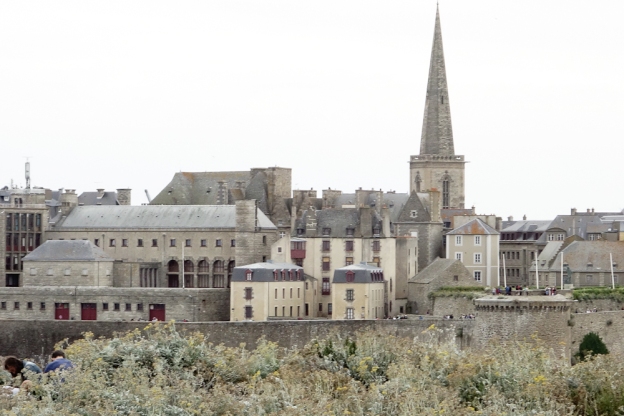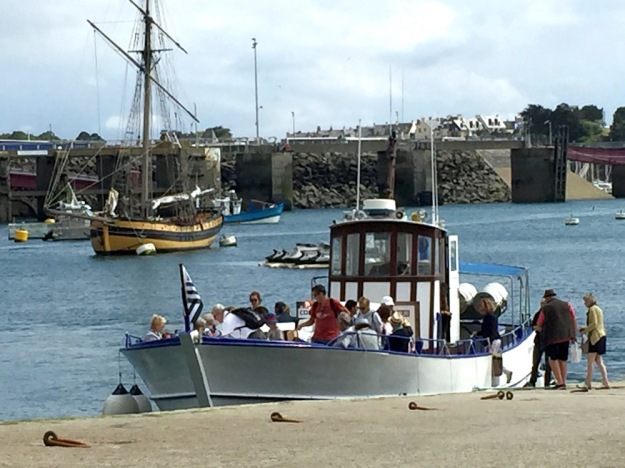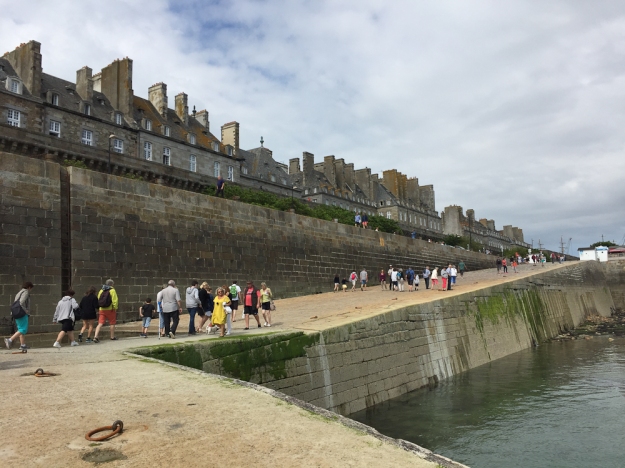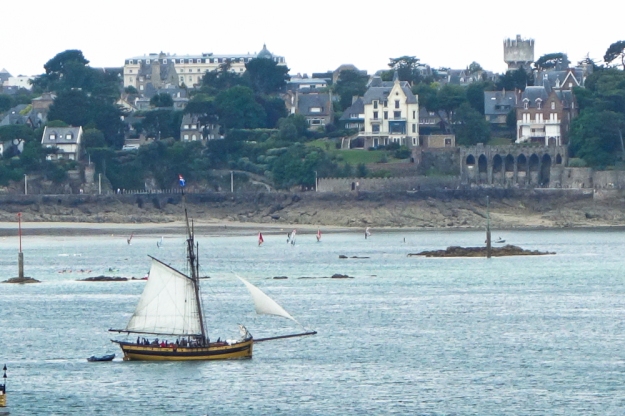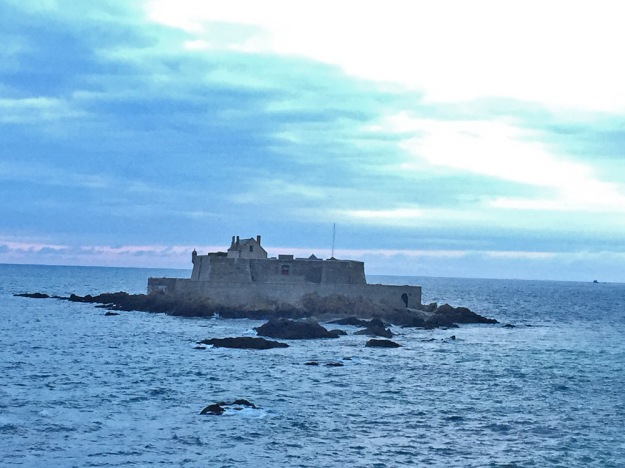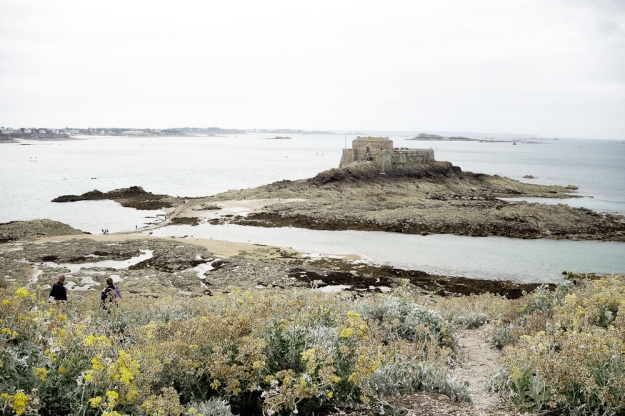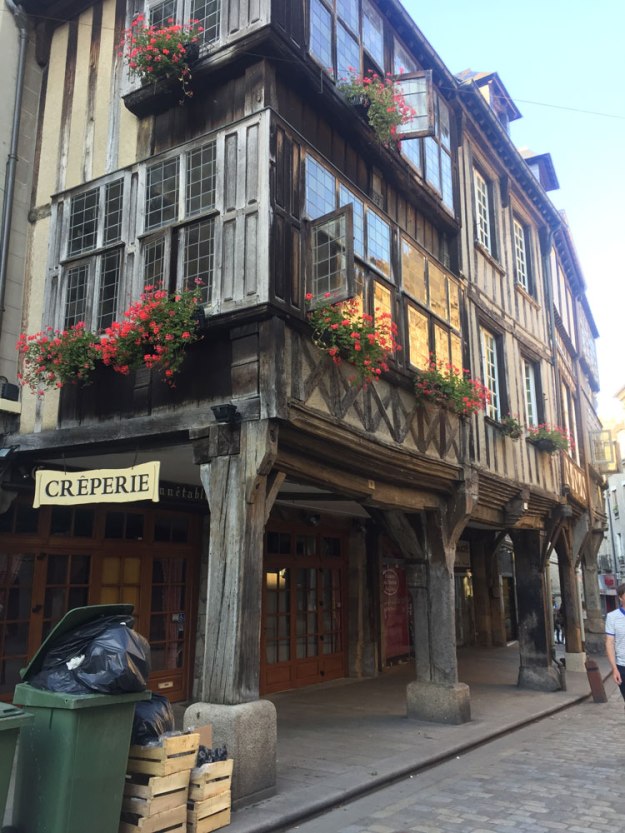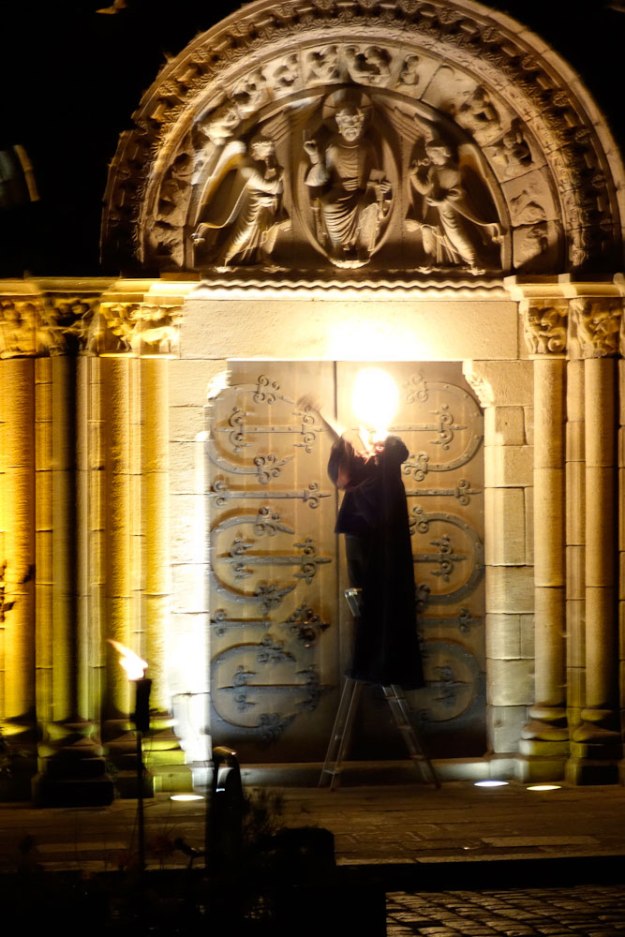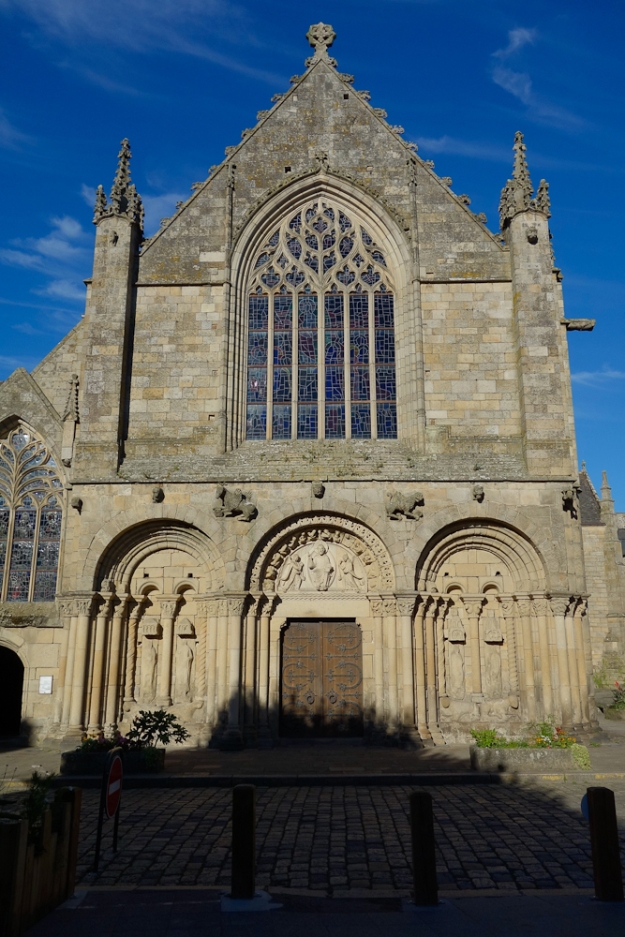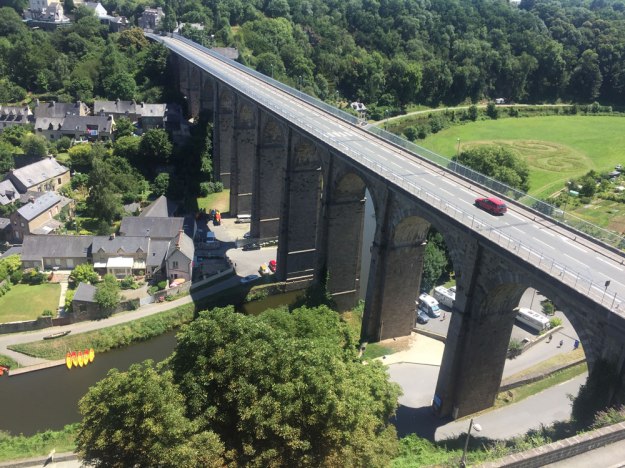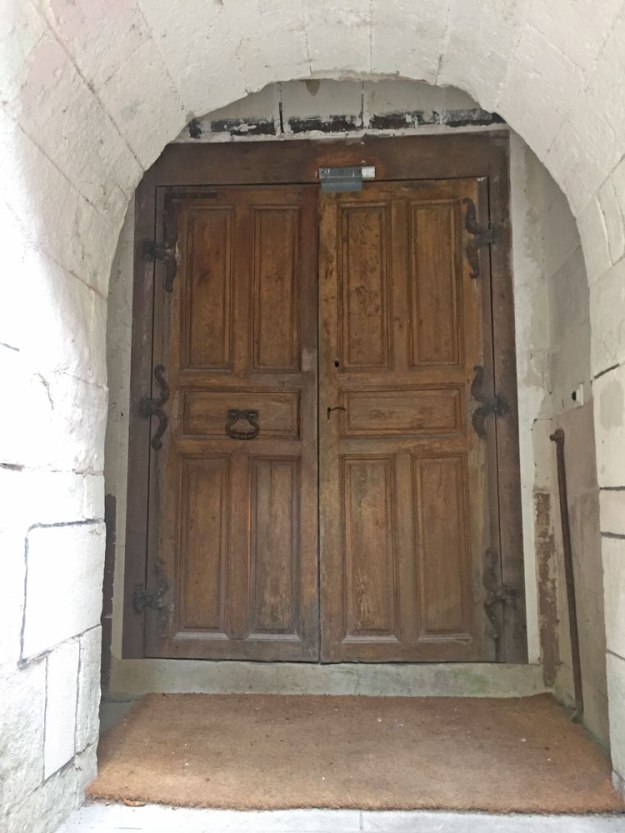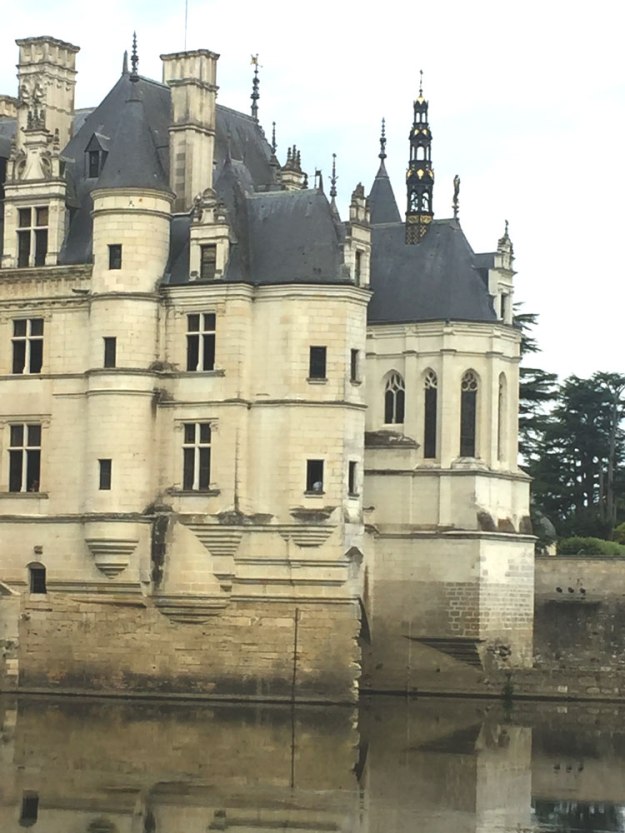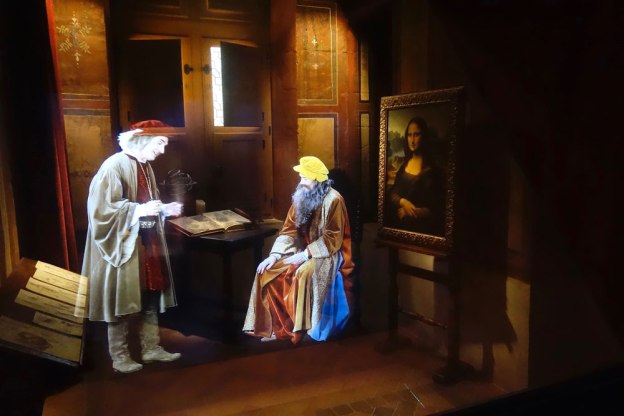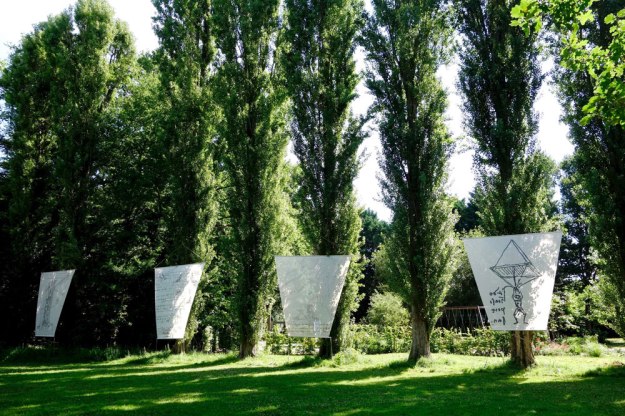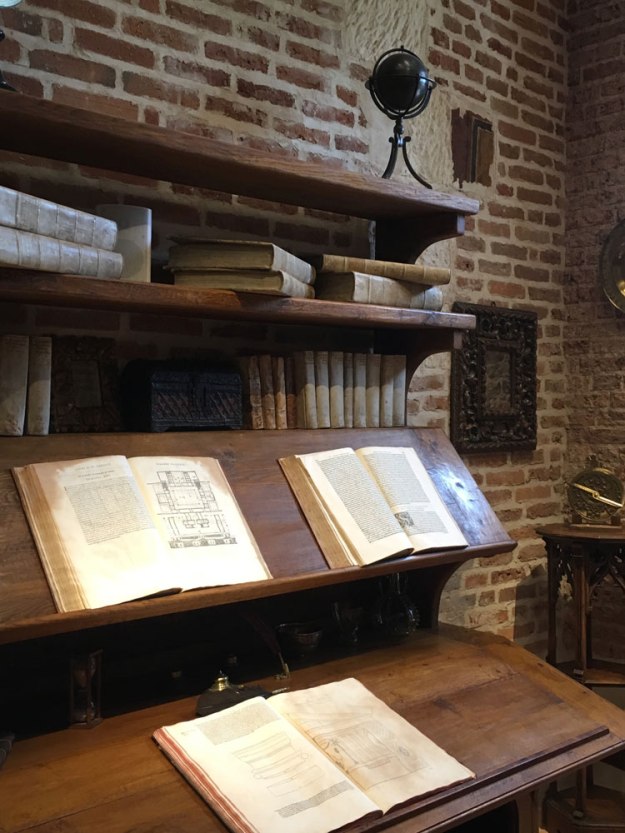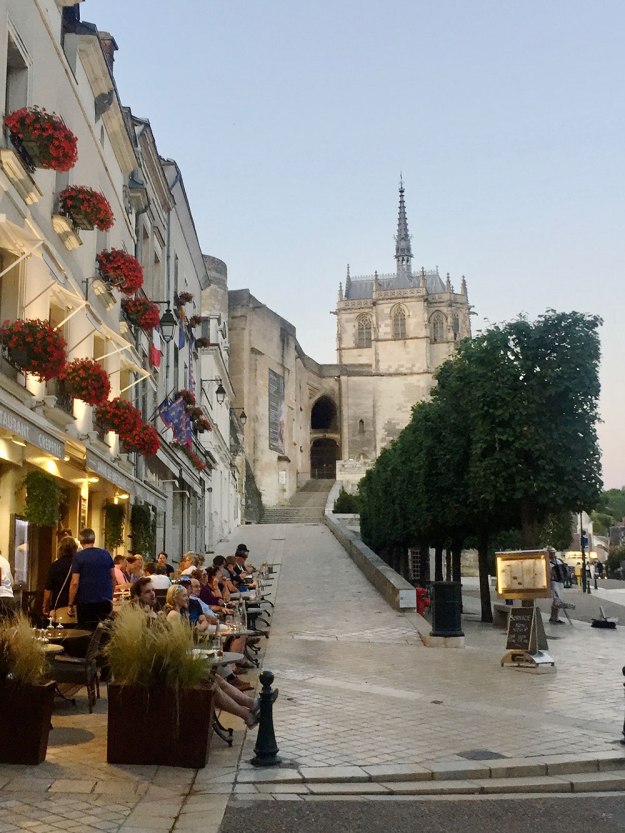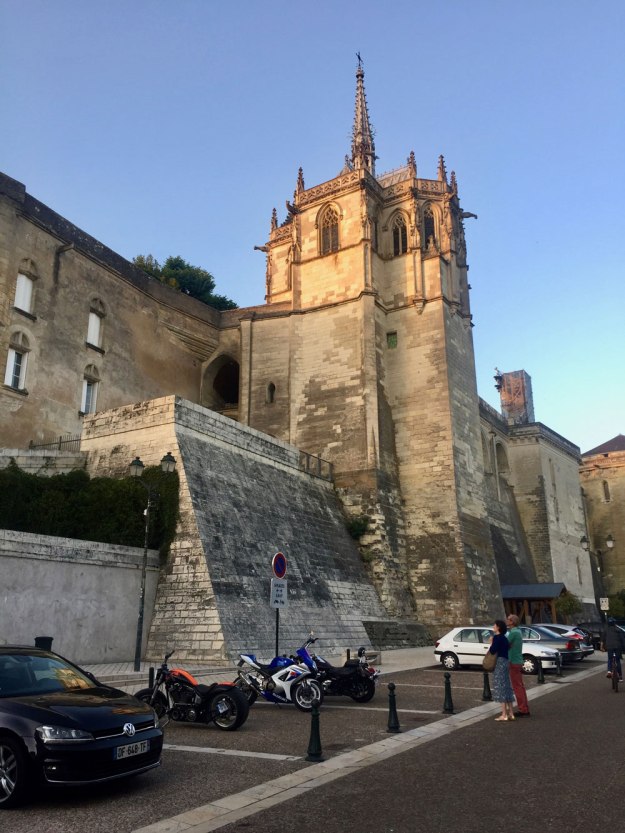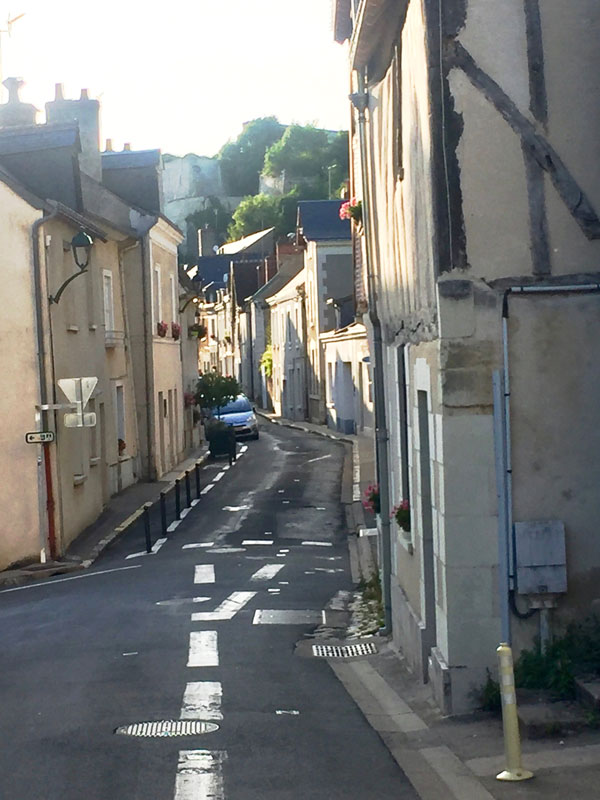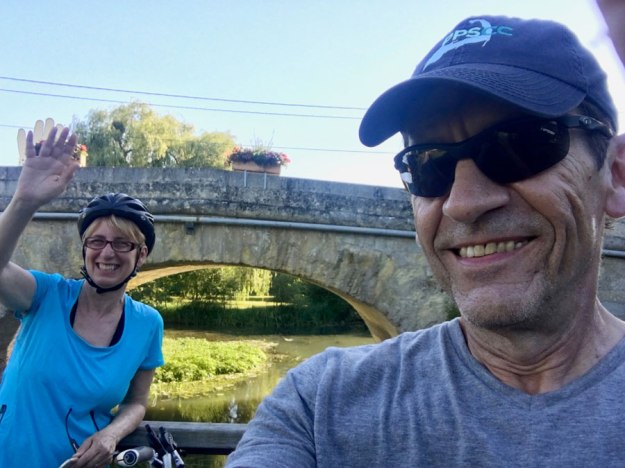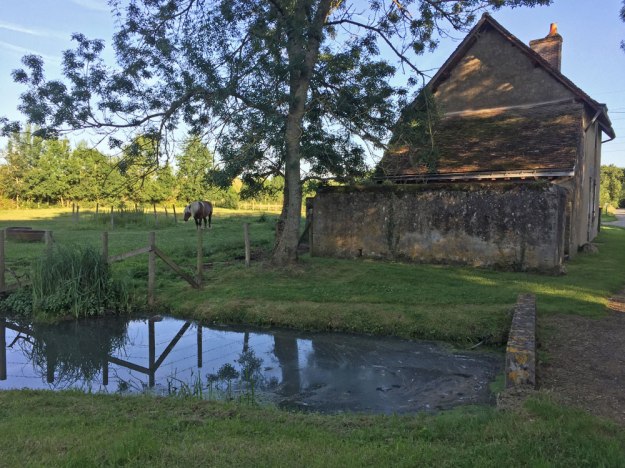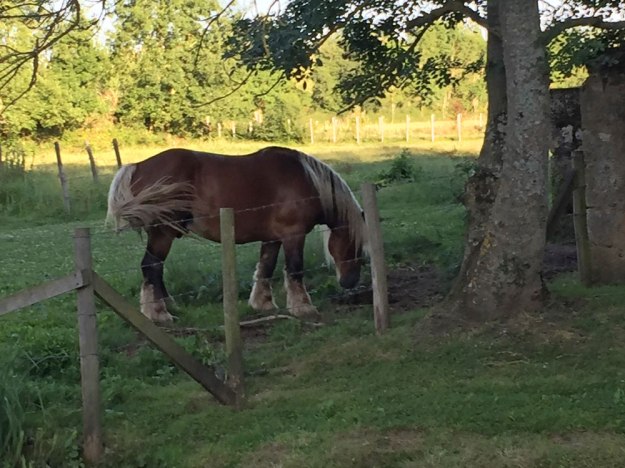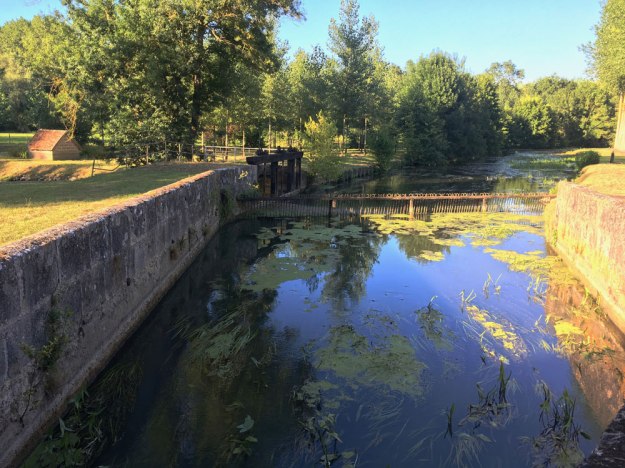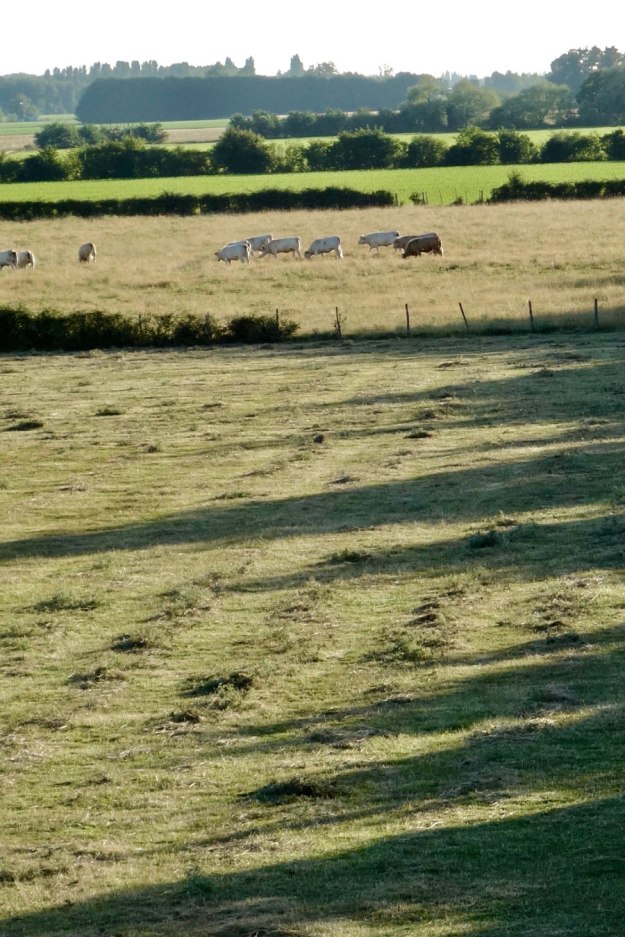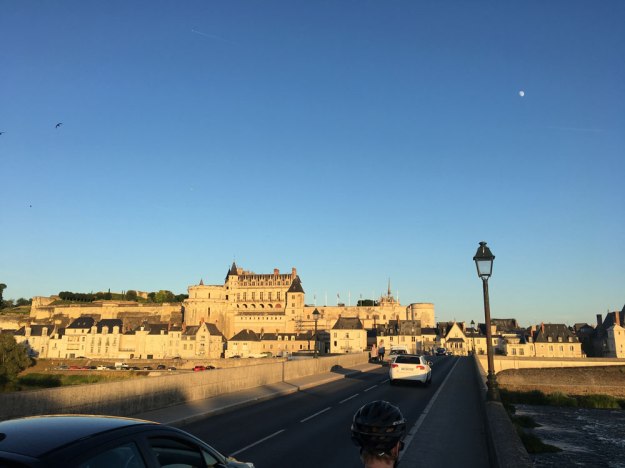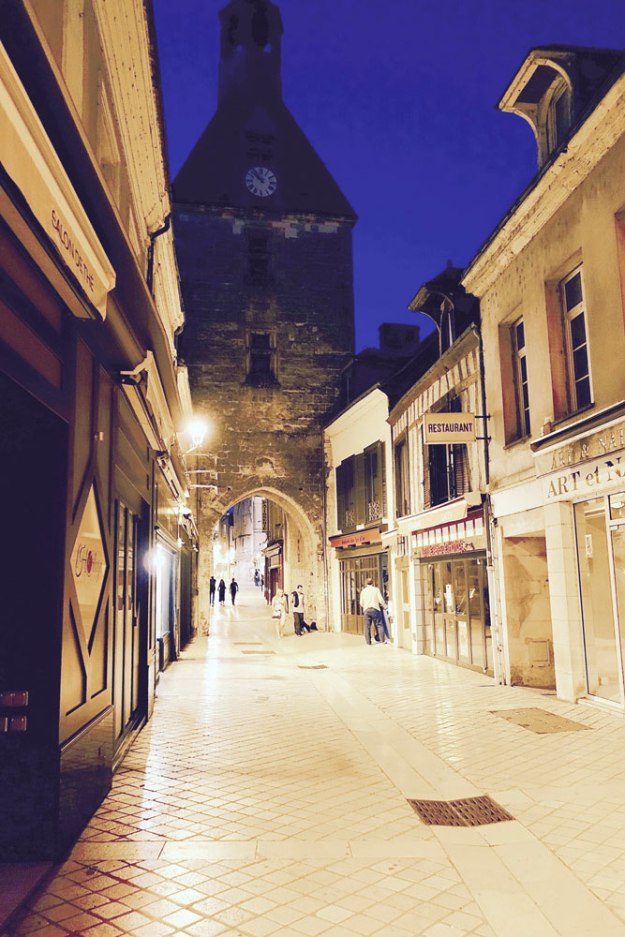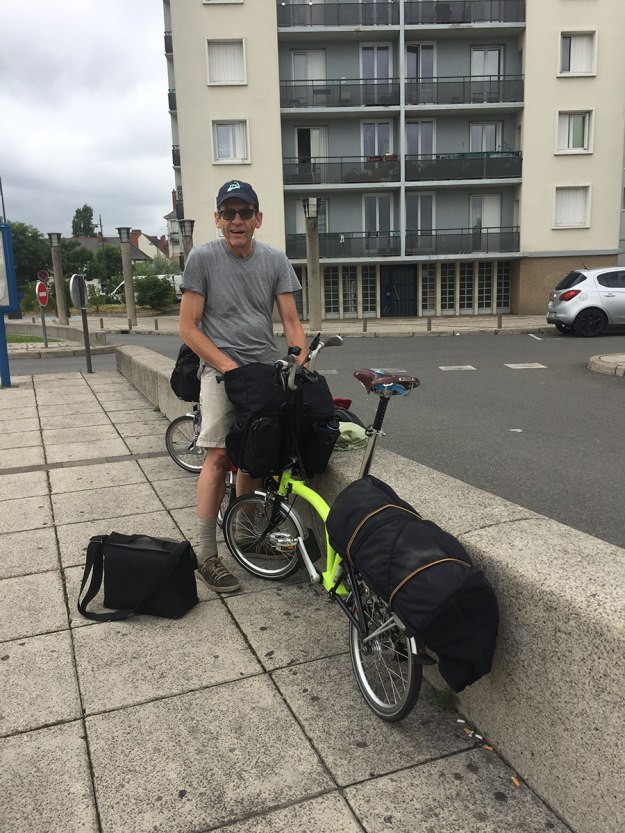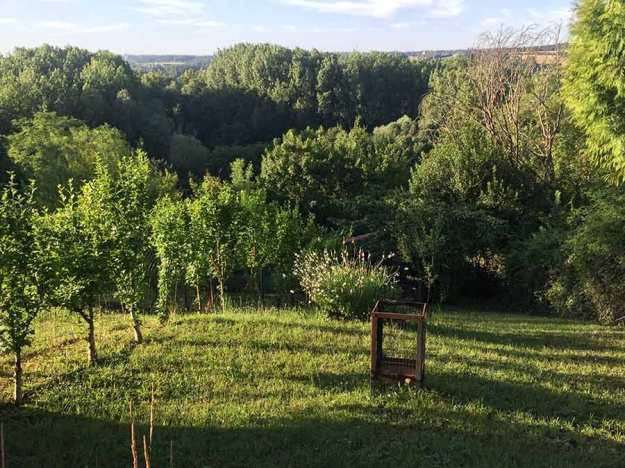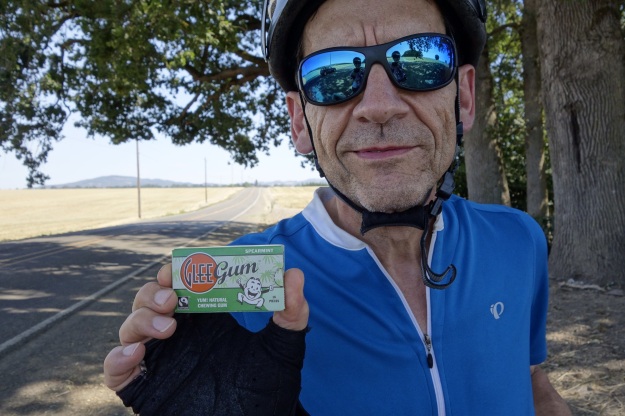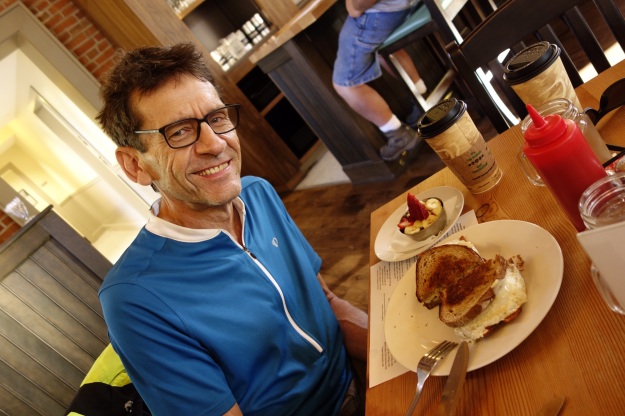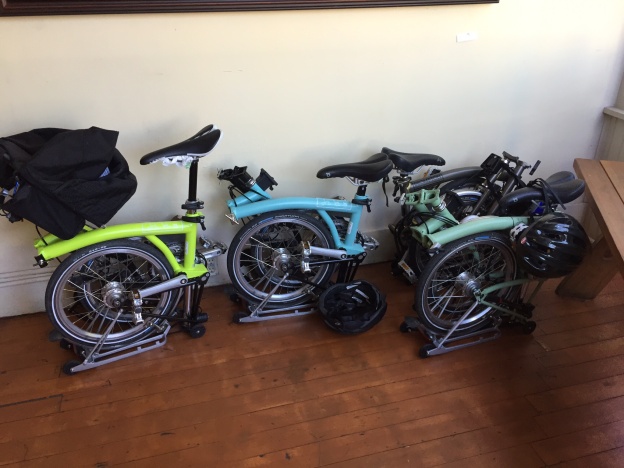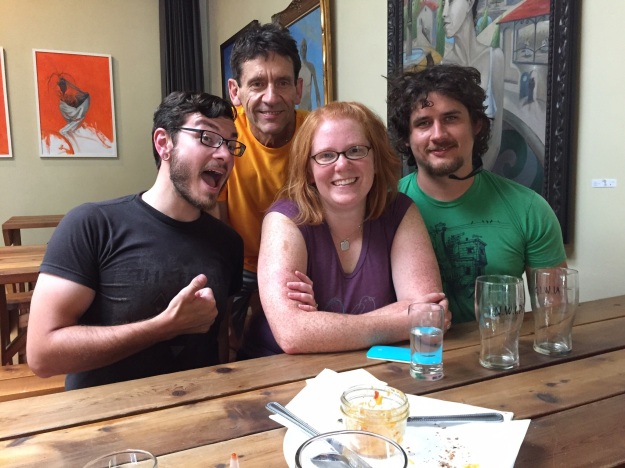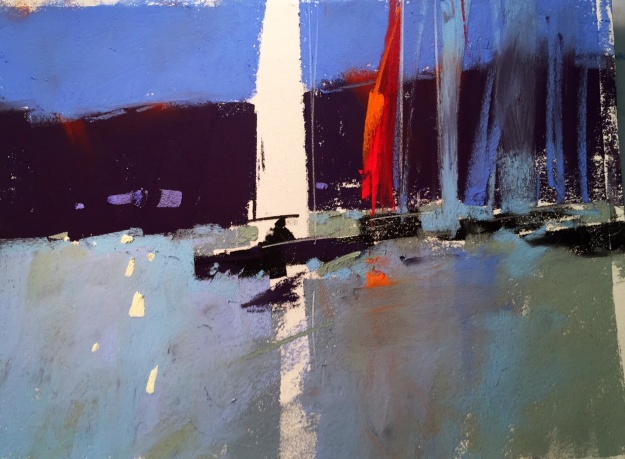Traveling to St. Malo from Dinan is an easy afternoon’s ride, first up the path along the river Rance, and then diverting inland at Taden. There Bretagne Velo Route 2 continues along an old railway line.
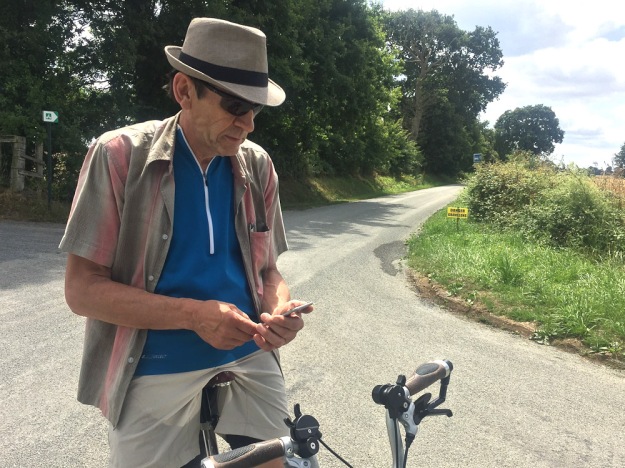
Gerry checks the route on his GPS. We’ve stashed our helmets and baseball caps in favor of our new French Chapeaux.
This former rail house sits at the start of the trail built on what was once a narrow gauge rail line. The path is lovely, overhung with trees, and cool in the shade.
Velo Route 2 ends in Dinard, on the coast, but on the opposite side of the bay from St. Malo. We caught a small ferry or “vedette” for the 15 minute ride across the harbor to the ancient walled city of St. Malo.
Landing on the stone quai outside the city walls we are awestruck by the beauty and drama of this place, its ramparts towering above us, its cobblestone walkways leading to one of the gates to the city.
St, Malo is an ancient city, with a well fortified harbor. Fiercely independent, with the motto Semper Fidelis: Malouin always! It is a center of shipping, fishing and commerce as its been for centuries. Between 1500 and 1713 the Malouin Corsairs roamed the seas looking for ships to loot in the name of the King of France.
We have been fascinated with St. Malo since reading “All the Light We Cannot See” by Anthony Doerr. This beautiful and evocative novel follows parallel stories of a young French girl and young German boy who’s paths eventually intersect in St. Malo near the end of WWII. Thousands of German soldiers were rumored to be entrenched in St. Malo (in actuality there were only about 75). American planes bombed the town in a devastating attack, destroying eighty percent of the buildings in the process. After the war the town was rebuilt, but the grace and character of the old stone buildings sharply contrasts with the more uniform replacements from the 1940’s.
Our hotel—one of the small number of buildings that survived he bombing intact — has been owned by the same family since 1936, and sits right behind the sea wall. From our tiny room on the 4th floor we can see over the ramparts to the sea and the islands offshore.
Children run and play on the beach, and swim in the tidal saltwater pool. Catamarans are lined up under the sea wall, and navigate the bay. Sitting at a cafe on the beach drinking Café Creme we pinch ourselves—what a beautiful spot!
We spent the evening strolling along the ramparts, reading about the history of the town through the centuries, wandering through squares filed with flower beds, restaurants and tourists.
For dinner the first night we skip the fancy restaurants and have a burger Turkish style. Harissa sauce and Chat Malo, a local beer. Yum. Seems fitting somehow.
At night St. Melo is magical, lit by many-colored lights from the restaurants and hotels, its squares filed with people. Tiny streets and hidden gardens reveal themselves as we wind our way back to our hotel. The line between past and present blurs in the twilight.
The buildings below remind me of the “tall narrow house on Rue Vauborel” as described in All the Light we Cannot See. I imagine 16-year-old Marie-Laure here, alone in her room on the 6th floor as the Allied air attack grows closer.
With a 15 foot tide, one of the largest in Europe, the shore is radically changed at high and low tide. Below is one of the islands at high tide.
The next day the tide is low, and walkways emerge to the islands, and are soon filled with hikers, exploring the remains of fortifications, or visiting the tomb of Chateaubriand.
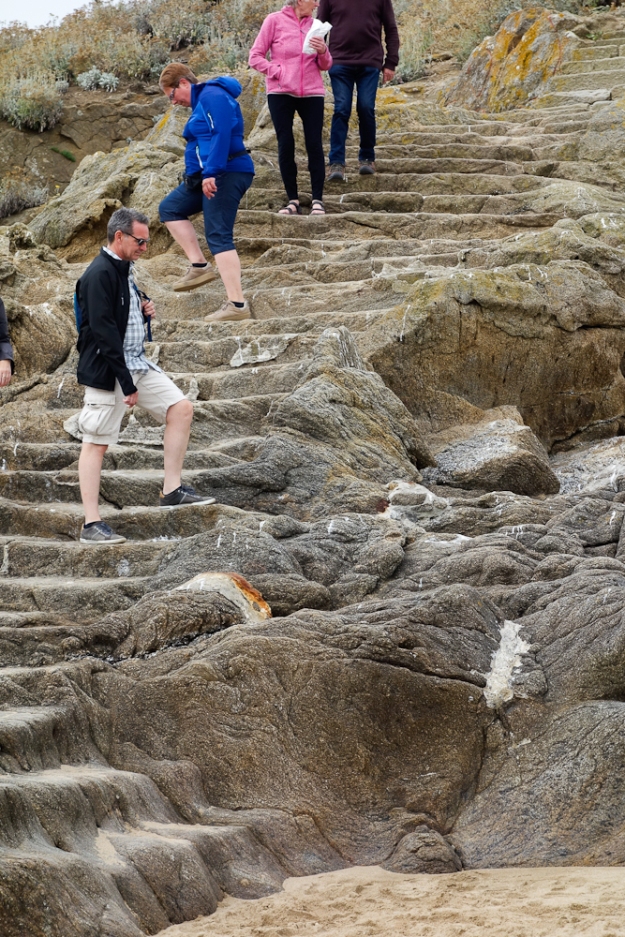
Ancient stone steps, rounded by the tides, lead to the grave of Chateaubriand on one of the islands.
After exploring the islands I visited an old bookshop in a building that clearly pre-dated the war. Browsing through piles of old photographs, postcards, and stacks of books, I felt like I was sifting though remains of St. Malo’s past—photos of ruined buildings, streets filed with rubble, children playing in happier times. In one photo a beautiful old woman gazed back at me from the interior of her salon, a sweet smile on her face.
I asked the proprietor if the building had survived the bombardment. “Yes”, she replied “one of a very few” and showed me a photo of the building standing alone surrounded by rubble. “A miracle” we agreed.
On our last night, after enjoying a wonderful dinner of local oysters, fish stew, scallops and tuna, we happened upon two street performers entertaining a large crowd with a two person reenactment of the story of Beowulf. We understand little of what they are saying, just enough to follow along. But the drama of their voices, pantomime, pratfalls, and gymnastic improvisation has us all captivated as they lead us though the tale of Beowulf’s battle with the monster Grendal and other adventures.
Amazing acrobats, they bring this ancient epic poem to life with great energy and humor.
How perfect, and improbable!
At the end, the handsome bearded “Capitaine” requests “Bisous” from the crowd, and a series of small children, young men, and women line up to respectfully exchange kisses on both cheeks with the hero.
